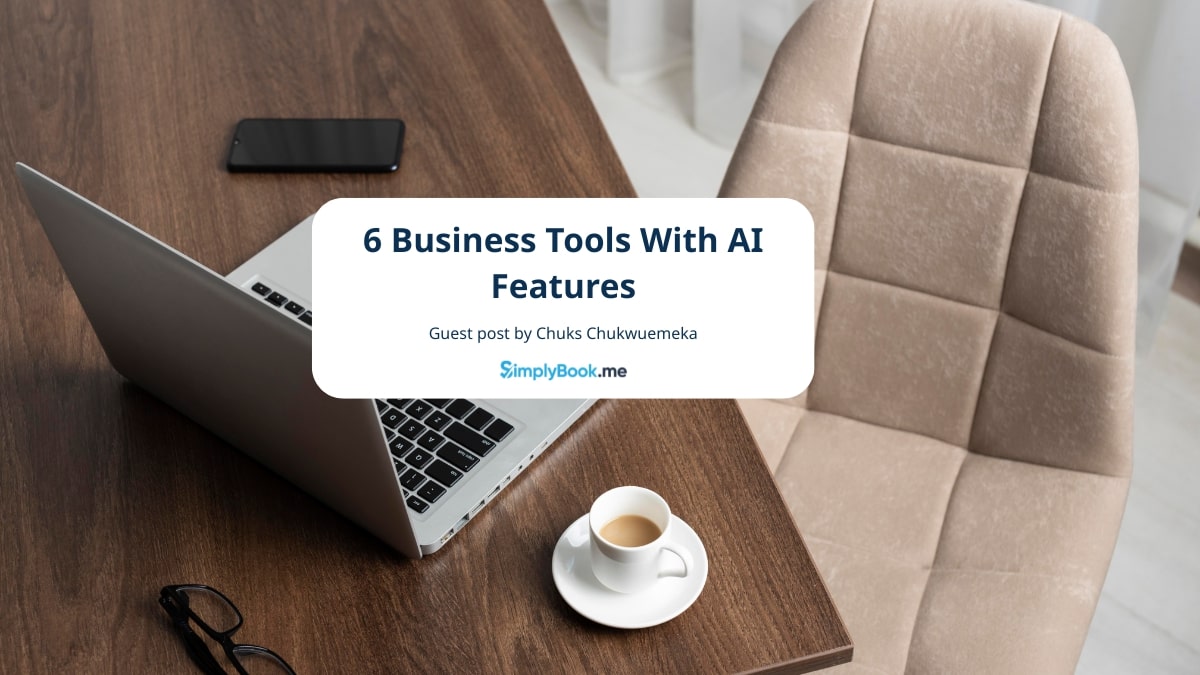6 Tips for Moving Your Business Online

This post is also available in:
![]()
![]()
![]()
The situation that occurred in 2020 is unprecedented in modern history. For many decades there was no such test for brick and mortar business owners like this one. So far, only the small businesses have been hit, but bigger companies have begun to feel it too. In some cases, COVID just accelerated an inevitable fall; in others, it destroyed healthy, profitable businesses.
At the same time, online business is booming. Already in April 2020, US and CA online businesses were reporting a 146% increase in orders. Needless to say, numbers for 2020 will be record-breaking, and the whole COVID situation will advance the digital business progress by many years.
But COVID is just one of the reasons why you should consider moving your business online. There are many more. For example, you can reach new customers and scale your business in a way that would not be possible for your purely brick and mortar business.
Digitalization of your business is not only a tremendous growth opportunity and your first step into the digital era, but also a great way to diversify. By standing on more than one pillar, you are significantly increasing the survivability of a business.
To help get you started, we’ve lined up a few tips that will help you start drafting your digitalization plans.
Tips for Moving Your Business Online
1. Choose Which Part of Your Business You Are Moving Online
If you are making a complete transition from a physical location to an online business and you mainly sell products, not services, you will need to decide whether you are taking all or part of your business with you.
Brick and mortar shops typically have more extensive stocks, and moving your business online may include additional storage costs for your inventory. Consider if those costs make sense and if you should only move your best-selling items to the online shop instead of all of them.
On the other hand, you may not be moving your entire business online, and you may only be considering accessing the digital market in addition to your physical location. In this case, you don’t have to worry about storing any excess stock. However, you still have to decide what to present to your online customers and whether to include everything from your existing offering in your online shop or on your website. It may still be a good idea to trim down on your offerings so you can focus your energy on promoting a handful of best-selling products at first.
Moving just a portion of the business first is the best way to get started. Sure, the situation that you might have experienced in 2020 may force you to start over completely, but if possible – move in steps. Make your digital presence a side income to your primary business, and move from there. When you already see some traction, it is much easier to know where to move next, or whether you will need to pivot completely.
If you are providing a service, analyze if and how you can move it online. For example, if you have a barbershop, you may schedule your clients, sell hair products online, but you still need a physical location.
But if you are running a consulting company, you can move your business online entirely with the use of the many available digital tools.
2. Start with a Domain
Just like the first step of opening a brick and mortar business is choosing a location, your first step in moving your business online will be choosing a domain name. In fact, “finding one” is more appropriate. The best-case scenario is that you can find a domain name that matches your business. But, that may prove to be tricky sometimes.
If your business name is generic, the typical “.com” format will most likely be taken. In this case, you will have to adapt and find a suitable name from the available ones. For instance, if your business is a bed and breakfast called Todd’s, you will quickly find out that todd.com is not available. You will, however, be able to add another characteristic of your business to find a suitable (and available) domain name—something like toddsinn.com or a catchier version like toddsbnb.com.
For domain name advice and hosting plans, you can find many online platforms that will do everything for you. You will have plenty of standard and premium pricing options to choose from on such platforms and country extension options as well. “.com” extensions are typically most appreciated.
3. Build Your Website
At this stage of moving your business online, you should consider your budget and your technical skills. It’s how you can decide between using a web developer or a do-it-yourself platform. While web developers cost more, they can also deliver more in terms of complexity and customization. The chances are that you have a website, but it is not sufficient for a full-scale attack on your online competitors, so in that case, you would need to redesign it.
DIY platforms are great if you want to keep costs low and don’t require too many complicated features for your business’ website. They are easy to use and usually have a simple drag and drop options, so you don’t have to worry about learning how to code.
Choose a Suitable Structure
The structure you choose for your website when moving your business online is critical. You can select something as short and catchy as a landing page or a complex website with numerous pages and an integrated e-commerce section.
Keep things on point and engaging and create content that highlights your product/service’s value to the customer. Gone are the days when websites were packed with “We at X do Y”. It’s now all about what the customer benefits are.
It’s best practice to have:
- a homepage summarizing product features and benefits
- an about us page telling your story
- a product/service page describing it in more detail
- a contact complete with all contact options and details.
For your eCommerce needs, there is a variety of one-stop services that you can use.
Optimize Design and Content
For your website design, you should choose a template that works for your type of business. For instance, if it’s a café or a bistro, your best bet is a theme that focuses more on images rather than text. If you provide plumbing services, you should put more emphasis on customer reviews. Whatever design you choose, don’t overcomplicate it. And keep it in line with your branding themes.
A simple website design will pay off because it won’t end up confusing your customers and looking unprofessional.
Think Of Basic SEO
There’s one more thing you’ll need to take into account. To streamline your business’ online move, you will also need to adapt to how you do business. Say you were running a local cake business. People in the neighborhood knew you, they knew your products, and they kept coming back because they liked them. These customers will most likely continue to buy from you even after you’ve moved your business online.
The key here is how you attract the customers who don’t know you or your products. How do you take advantage of the immense audience you can find online? What does word-of-mouth look like on the Internet?
The answer is simple. Its keywords. You’ll need to invest in optimizing your content with the keywords that will attract the right audience. It’s best practice to find relevant keywords that are not super competitive and target your specific customers rather than a large pool of potential customers. There are plenty of online SEO guides that can teach you fundamental tips and tricks, and you can also take it one step further and hire a digital marketing company to help you reach your online business goals.
4. Streamline Online Payment Options
Another crucial aspect to consider is making it easy for customers to order and pay for your product or service. You will need to offer them this feature and set up secure payment options on your website. Many times, it won’t be as complicated as you’d expect. It will require a bit more time and adding each product in the online shop, but plugins can make it easier for you in no time. Many of the website builders available also have e-commerce features complete with payment and delivery options.
To go one step further, you can set up several payment options. This will show customers how committed you are to making their buyer’s journey as streamlined as possible.
5. Make Social Media Work for Your Online Business
Social media is one tool you can use when moving your business online, that has much potential. As you make your transition from offline to online or even when you’re just setting up your online presence to complement your physical one, social media is the best channel to let your customers know what you’re up to.
Use your social media accounts on Facebook, Instagram, Twitter, and other platforms to announce your move online or your website launch. Create a promotional campaign around it. Offer special discounts to the first 20 customers. Encourage them to share your new website with their friends and offer an incentive in return. There are numerous ways you can engage your online following and use their help to promote your online business.
Early on, analyze who your client is. If you are a B2B business, you will not go on TikTok. On the other hand, if you are selling low-mid price range jewelry – Instagram may be a perfect platform for you. In that case, focus primarily on that one platform, use many available Instagram analytics tools, and move to other platforms only after everything is in motion for that main one.
While it may seem that creating an account on various social media platforms and posting there is simple enough, you will not be able to manage all of them properly single-handedly. Even in our example of Instagram, there are many things to take care of; posting frequency, content visuals, best times to post, reacting to comments, following trends, and hashtags. Make sure to allocate your resources wisely.
As for marketing purposes, social media is a favorite of online business, and for good reason. First of all, it’s free. Having an excellent presence on social media and regularly engaging with your existing or potential customers will attract more followers. The more you encourage conversations, you build an online reputation, and that will translate to more customers. Social media also provide a perfect platform to leverage giveaways and various referral programs.
Second of all, if you are willing to pay a little money, social media can give you access to more people than you can handle plus optimize customer targeting. This way, your social media profiles can attract the right audience with maximum conversion potential instead of just the general audience.
6. Automate and Outsource Everything
With the rise of automation tools, moving your business online can be easier and more lucrative than you would have thought. Multiple easy-to-use apps and programs can take your business into the 21st century and streamline your transition to the online world.
There are automation tools available for your communication needs, for managing your social media, for your email and digital marketing needs. There’s little you can’t find online to help you run your business as efficiently as possible.
One of the best tools you can get is a booking and business management solution. It can simplify everything from how you manage your bookings to your marketing and sales and your client management needs. It allows you to efficiently schedule bookings for multiple locations, reduce cancellations or no-shows, accept appointments directly from your website and social media accounts, and collect customer information to grow your business.
But that is just the tip of the iceberg, automation is a key element of the reason for online business success, and there are many tools that can help you with it.
In these 6 points, we wanted to give you areas that will help you to move a part of your whole business online. But we would like to mention a couple of factors that may differentiate you from your digital competitors.
Tips for Building a Successful Online Business
Put Your Stamp on It
You most likely have specific core values and principles guiding your business. They are the ones that have brought you this far. In the same way, you must already know what attracts customers to your company and what aspects of their interaction with your brand they appreciate most.
When you are considering moving your business online, you must make sure that those key aspects are not lost. They have to represent the core of your plans and tactics, and they have to be highlighted and promoted to make your business stand out.
Going out into the sea of online businesses, you’ll need all the help you can get to attract attention. And authenticity is key. So, not only should you not be afraid to stay true to who you’ve been until now, you need to take your genuineness and let it be what differentiates your business from others.
Connect with Your Customers
This tip for building a successful online business applies to two aspects. The first one is how you treat customers. It isn’t much different from how you approach sales in a brick and mortar business. When you run an online business, your customers need to feel tended to and appreciated. Having many options to choose from, they expect top service from the businesses they decide to put their trust in.
They want you to over-deliver and give them a great customer experience. That’s how you win over their loyalty and maintain them as customers.
To do this, you will need to make a strong first impression and exceed their expectations every time. Be it in terms of the support you offer, the quality of your product or services, the value you offer compared to the competition.
The second aspect of this tip applies to where you interact with your customers. Yes, your website needs to deliver on all of the above. But there are other channels where customers will expect you to engage with them. Social media plays a pivotal role in how you can connect with customers. It gives you a platform where you can show them more than just your product or service. It’s where you can showcase your brand’s values and beliefs and where you can be transparent. We’ll be getting into more detail about this below.
Offer the Best Solution
The one thing that can cement your position in the world of online businesses is delivering the best solution to a customer issue or problem. When you run a brick and mortar business, you are familiar with the needs and wants of your usual customers. The online world is broad, and customer issues are more complex. To stand out and win more business, you will need to tailor your product/service’s benefits to these needs.
This is where you will need to invest some time into researching the competition and how similar businesses present their offers to online audiences. See what keywords they use to attract attention and how they highlight their product/service’s value to stand out.
Conclusion
There is one significant differentiator between a physical and a digital business – testing is much quicker. Imagine how long it would take you to set a physical store? Finding a place, renting, renovation, employees, legal matters – half a year would go just into preparation before you would be able to welcome your first customer,
The situation is radically different in digital business, with various eCommerce platforms you can be ready in several hours. Testing and tweaking take longer, but you can start in the morning and be prepared to accept the first online users in the afternoon.
This allows you to test, pivot, change as long as needed to achieve your desired result. So as with every business – patience and consistency will bring you profits.
Guest Author Bio: Vlad Falin
Vlad Falin is the founder and blogger at Costofincome.com, where he writes about starting an online business and reviews digital marketing tools.You can find his LinkedIn profile here.



Comments
2 commentsMathilde Buxton
I read this article, there is really very valuable information here. But if you want a really good result, I advise you to learn the peer to peer marketplace building guide excellent recommendations.